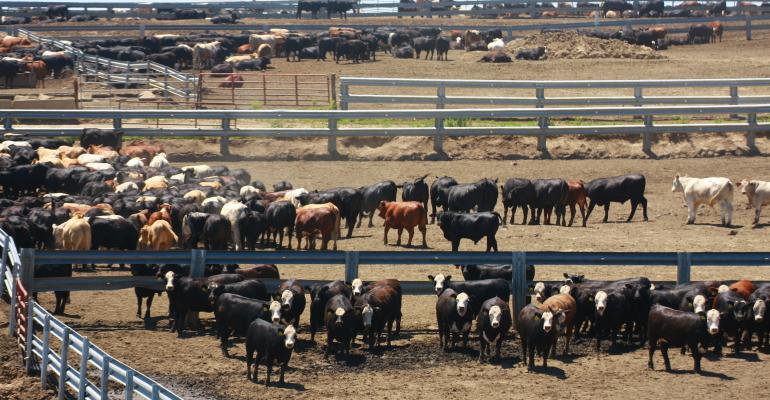Prices have gone up even as slaughter levels have risen.

Fed cattle prices rallied at the end of the year and have continued to rally in the new year, reaching $124-125/cwt. during the first week of 2020, according to Texas A&M Agrilife Extension agricultural economist David Anderson.
He explained that fed cattle prices tend to increase seasonally from late-summer lows to the end of the year and that it is not uncommon for prices to weaken between Thanksgiving and Christmas and again in February before the spring rally.
The price rally in the fall has been stronger than average, Anderson relayed.
“Over the 2013-17 five-year period, the average rally has been about $11/cwt., or 8.8%, from the last summer low to the end of the year. The fall rally in 2018 totaled $15/cwt., or a 14% increase. The ongoing rally that began in the fall of 2019 increased just over $22/cwt., or a 22.6 % increase,” he said.
The fed cattle market gained another $2/cwt. in the first week of the year, he added.
These rising prices have occurred as slaughter has risen as well, Anderson pointed out.
“For the fourth quarter of 2019, fed steer and heifer slaughter was just barely above a year ago, about half a percent higher. Fed heifer slaughter was up about 4% from the fourth quarter of 2018. Fed steer slaughter was down about 4% from a year ago during the fourth quarter,” he noted.
Further, fed cattle movement ramped up in December, with total steer and heifer slaughter up about 5%, Anderson reported.
He also said it’s worth noting that the Tyson beef plant in Holcomb, Kan., has reopened after a fire in early August closed the plant. This, he said, has contributed to packer demand for fed cattle, helping boost fed cattle prices and slaughter.
In addition to increased heifer and steer slaughter, Anderson reported that cow slaughter was up almost 7% in the fourth quarter. All of that increase came from beef cows, he said, as dairy slaughter declined versus a year ago.
Steer and heifer weights are also higher than a year ago, with some double-digit weekly increases, according to Anderson. This, combined with higher slaughter levels, results in an increase in beef production.
“With more cattle on feed than a year ago, we should expect large levels of fed cattle slaughter to continue into the new year. Weights continuing above a year ago will keep beef production higher in coming weeks as well,” Anderson said.
About the Author(s)
You May Also Like




.png?width=300&auto=webp&quality=80&disable=upscale)
